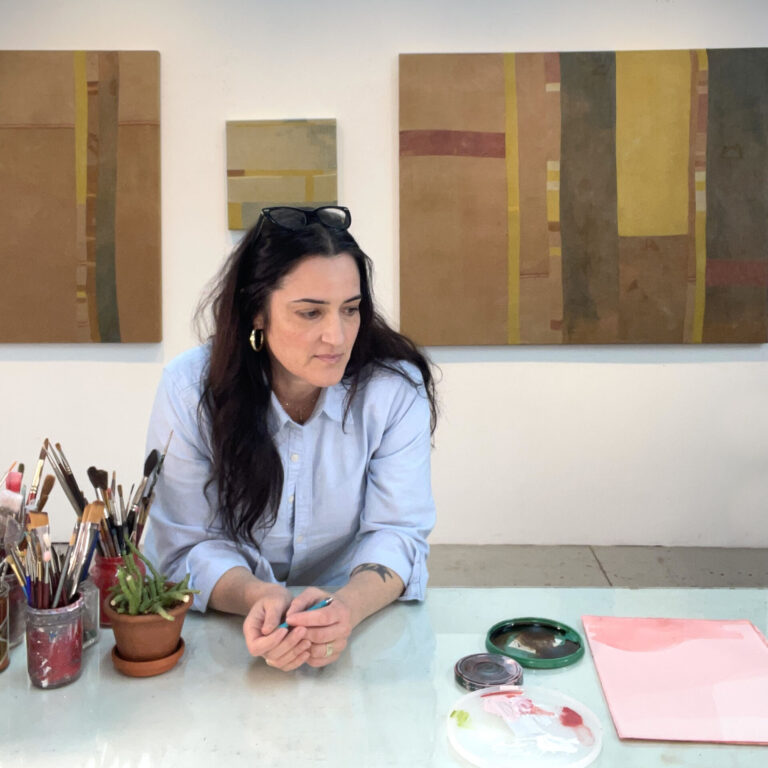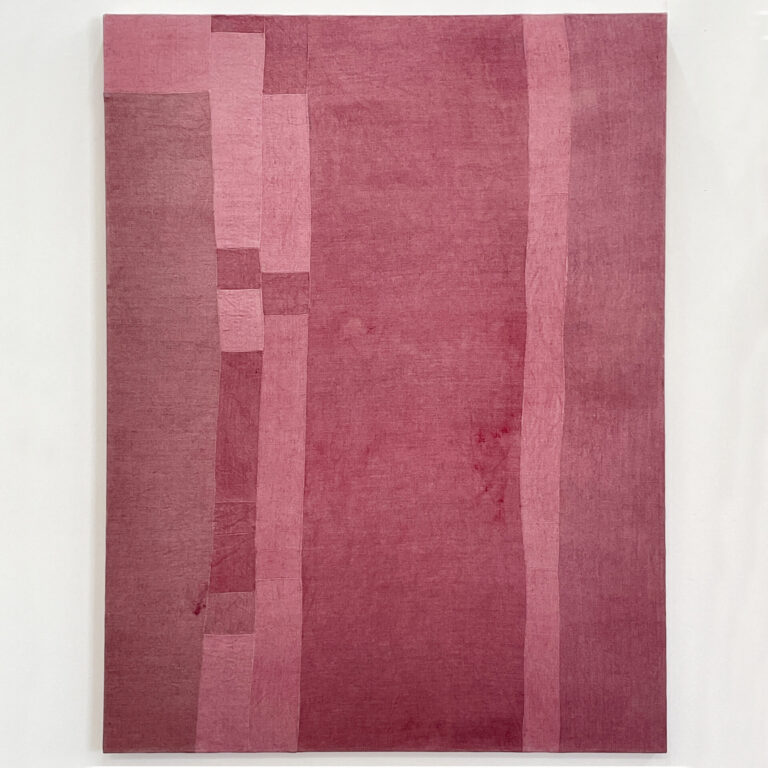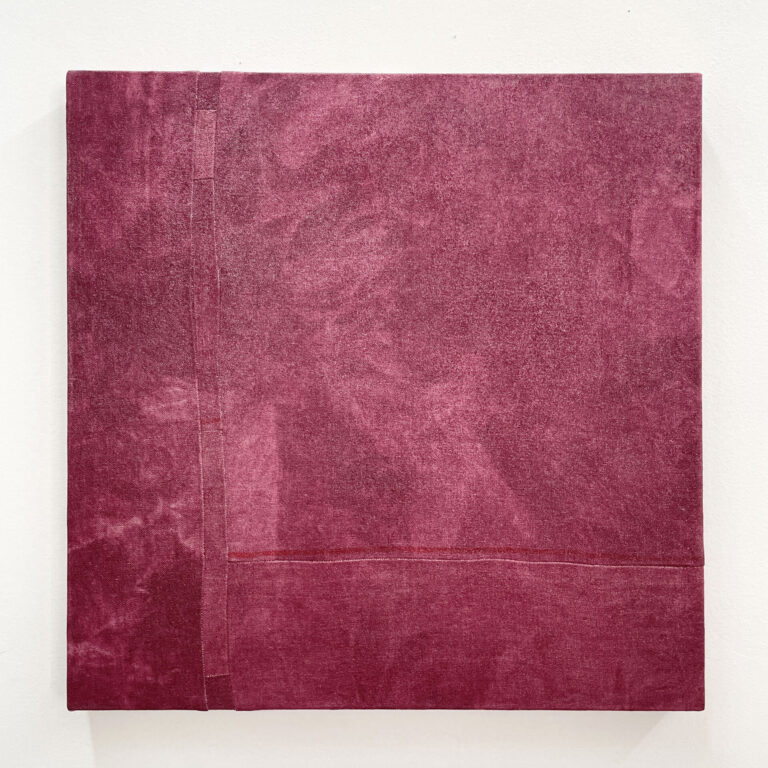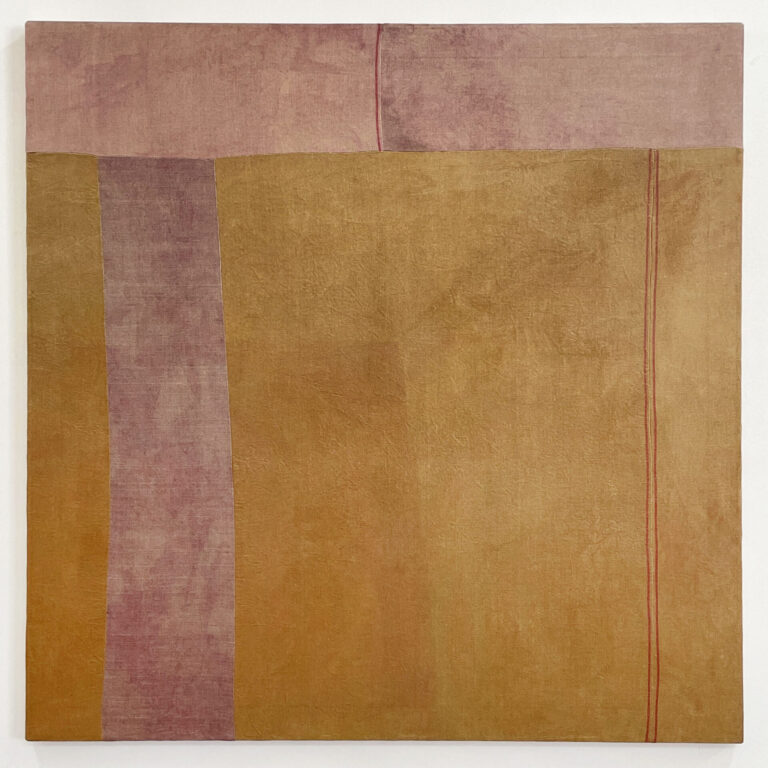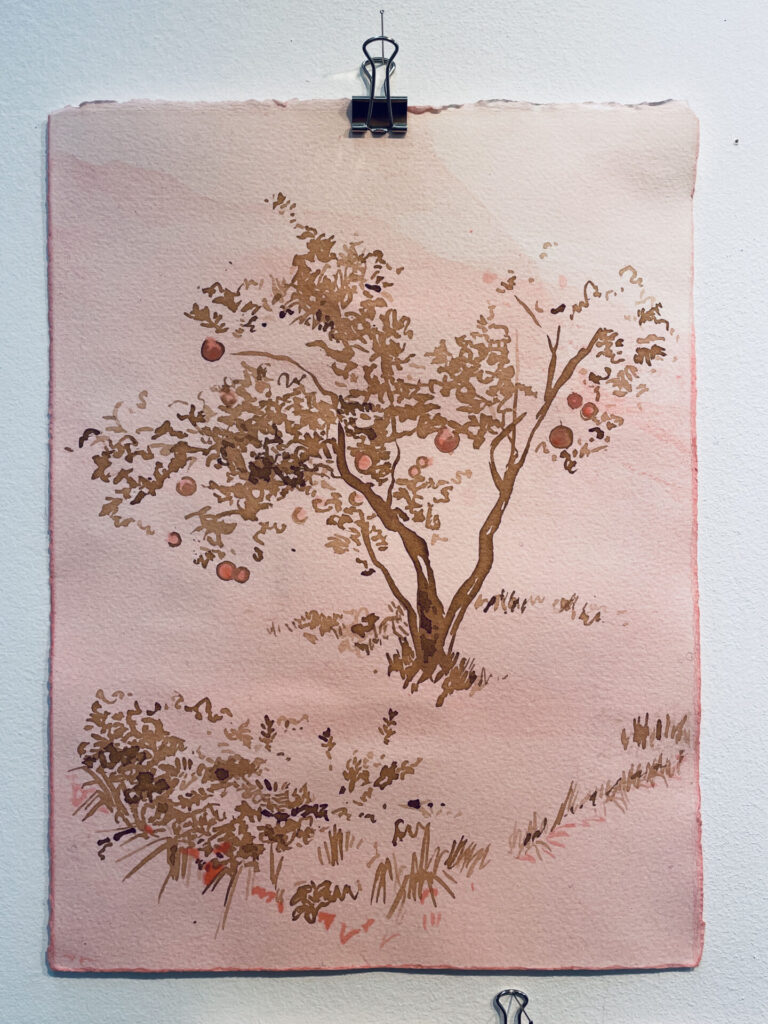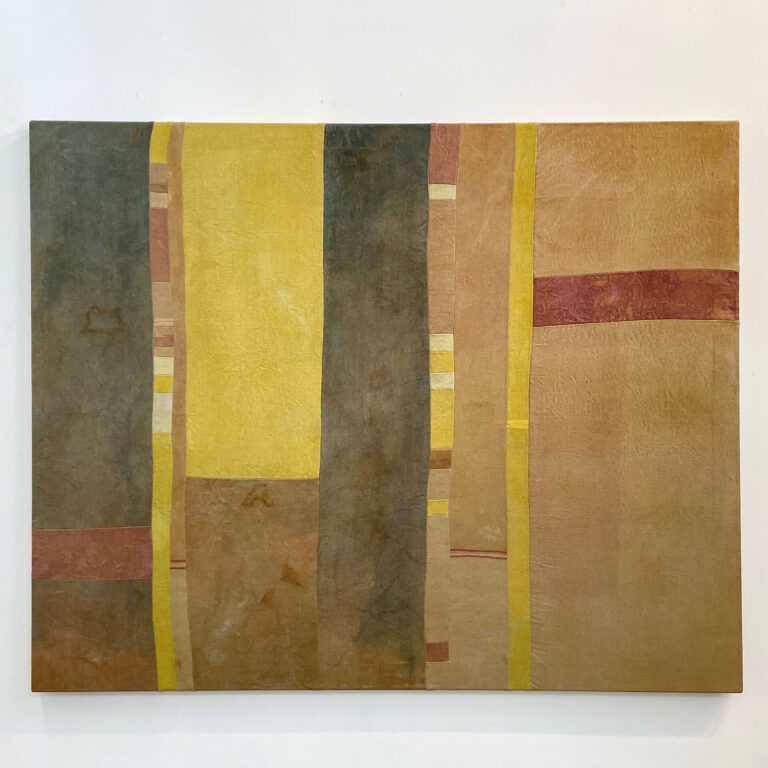Ribbon Rack | Lauren Bartone
Mar 6 — Apr 19, 2025
Sarah Shepard Gallery is pleased to announce Ribbon Rack, a solo exhibition of work by Bay Area artist Lauren Bartone. Ribbon Rack presents a new collection of hand-dyed and sewn linen canvases occupied by invigorating fuchsias, dusty blues, and shades of yellow from canary to ochre—along with four watercolor pieces—inspired by Bartone’s botanical and archival research. Ribbon Rack is informed by Bartone’s concurrent pursuit of a doctorate in Italian Studies and considers narratives of Italian national identity, including a framework of colonial history and cultural exchange. Set against a physical backdrop of fabrics that are hand-dyed using materials significant to this history, Ribbon Rack acts as a material and historical survey of Bartone’s archival interests.
Bartone’s work often navigates histories of craft and domestic labor, and the title Ribbon Rack appropriately evokes associations with craft. However, “ribbon rack” also refers to a small metal bar used to hold and organize military service ribbons. When arranged next to each other, the ribbons create bright, color-coded grids of great honor and significance. The canvases of Ribbon Rack allude to this colorful display, while the colors themselves have their own system of cultural and political significance. For example, the vibrant red-pink hue of cochineal, seen in cardinal and night I and II, was often featured in dramatic Baroque paintings of the Counter-Reformation. The mustard yellow of fustic, such as in the titular piece ribbon rack, makes reference to the khaki color that replaced traditional savoy blue military uniforms to ensure that soldiers blended into sandy colonial landscapes. Indigo blue, a color ubiquitous with colonial trade, also features in pieces such as waterline and lawn.
To create the color-blocked canvases of Ribbon Rack, Bartone dyed linen in hand-ground pigments made from natural materials such as cochineal, fustic, indigo, and weld. Her studio process also involved repeated dye baths and treatments, resulting in an experimental layering and mixing of colors. The product of this process is a collage of true tones and color blends: a convergence and confrontation of cultures and histories, which Bartone traverses with great care. Bartone meticulously selected swatches of dyed linen based on texture and hue and sewed them together in combinations that showcase these intersections and possibilities. The uneven dye marks and irregular seams, while natural traits, are intentionally included in the final works as a feature which identifies and celebrates their handmade origins. For Bartone, a trace of the artist’s hand is important, underscoring the physical labor traditionally involved in every aspect of textile production, and too easily forgotten in the contemporary moment of synthetics and fast fashion. The compositions in Ribbon Rack also intentionally play on landscape and still life conventions used in traditional painting, in which Bartone is formally trained.
Bartone’s studio work coincides with archival research of botanical and textile histories. As a doctoral student, Bartone considers the way plants are collected, categorized, and utilized in both practical and symbolic ways within Italian culture. In 2024, Bartone had the opportunity to conduct research in botanical gardens, colonial collections, and historic archives, such as those at the Vatican, all of which offered her a view of the complex and sometimes contradictory ways botanics have functioned in history. Four small watercolor pieces—banana tree (orto botanico di Palermo), pomegranate (Chiesa di Santa Teresa alla Kalsa), plane tree (orto botanico di roma), and sumac (Quartiere Musulmano degli Schiavoni, Palermo)—feature memorable trees from these research sites, and use walnut ink made from a tree in Bartone’s own garden in San Rafael, CA. In Ribbon Rack, Bartone’s watercolors and naturally-dyed linen canvases unearth botanical and textile histories to produce a patchwork of thematic and aesthetic possibilities.
Lauren Bartone is a Bay Area-based artist who works in an interdisciplinary balance between studio-based work, archival research, and public engagement. She initially studied painting in Florence, Italy, followed by a BA in fine art from UCLA in 2002. Bartone also received an MA in Education from UC Berkeley in 2005 and an MFA at Vermont College of Fine Arts in 2012. She is a current PhD candidate in the Italian Studies Department at UC Berkeley, with a designated emphasis in folklore. Her research focuses on the visual and material culture of Sicily and the Southern Italian diaspora. Bartone’s community-based and collaborative projects include two mapping series: A City in Maps (2015) produced as the artist in residence at the deYoung Museum of Art in San Francisco; and Paradise, A Map for the Centennial of the Panama Pacific International Exposition and SF New City Atlas for the Art on Market Street poster series with the San Francisco Arts Council. Additional artist residencies include Kala and Art Works Downtown in the Bay Area, and at the Orto Botanico of Palermo, in Sicily. Solo exhibitions include 16 Tons (2018) at the College of Marin Gallery and De Rerum Natura at Park Life Gallery (2022). Her work has been generously supported with grants by the Pirkle Jones Foundation, the Marin Arts Council, the VCFA Levin/Lutz Award, the Center for Interdisciplinary Critical Inquiry, and Global, International and Area Studies at the University of California, Berkeley.
Check gallery website for hours and additional info
